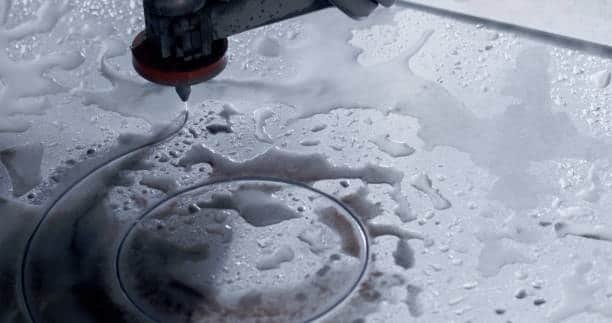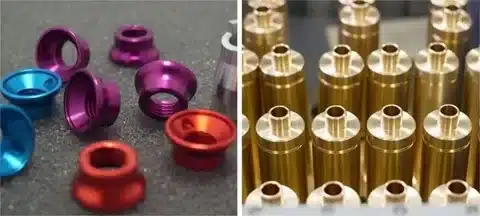In today’s advanced manufacturing landscape, Computer Numerical Control (CNC) machining and milling stand as cornerstones of modern production technology. These sophisticated processes have revolutionized how parts are manufactured across industries ranging from aerospace and automotive to medical devices and consumer electronics. This comprehensive guide explores the intricate world of CNC machining and milling, delving into the technology, techniques, applications, and future trends that define this essential manufacturing methodology. From basic principles to cutting-edge innovations, understanding CNC machining empowers engineers, designers, and manufacturers to unlock unprecedented capabilities in creating precision components with exceptional accuracy and repeatability.
Understanding CNC Machining Fundamentals
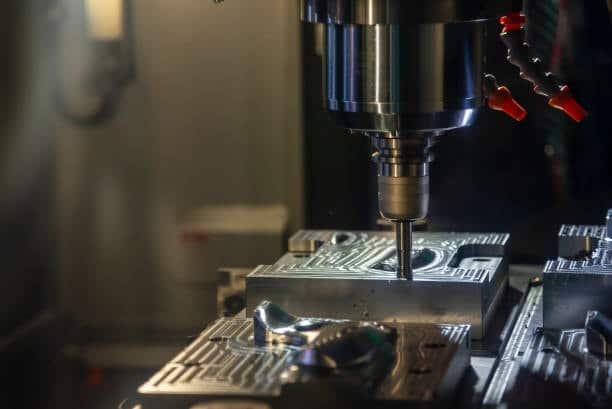
What Is CNC Machining?
CNC machining refers to the manufacturing process, including the milling process, where pre-programmed computer software dictates the movement of factory machinery and tools. This automated process transforms a piece of raw material (metal, plastic, wood, etc.) into a finished product based on precise specifications encoded in a computer-aided design (CAD) file. Unlike manual machining, CNC systems operate with minimal human intervention, significantly reducing the possibility of human error.
The Evolution of CNC Technology
The journey of CNC technology began in the 1940s and 1950s with Numerical Control (NC) machines that used punched tape for programming. The introduction of computers in the 1970s marked the transition to true CNC systems. Today’s CNC machines incorporate advanced microprocessors, sophisticated control software, and high-precision servomotors, making them substantially more capable than their predecessors.
Key Components of CNC Systems
Modern CNC systems consist of several critical components working in harmony:
- Control Unit: The “brain” of the system, processing programmed instructions
- Machine Control Panel: The interface through which operators interact with the machine
- Drive System: Motors and mechanisms that control axis movement
- Feedback System: Sensors that monitor position and provide real-time data
- Cutting Tools: Specialized implements that perform the actual material removal
- Workholding Devices: Fixtures that secure the workpiece during machining
CNC Milling Explained
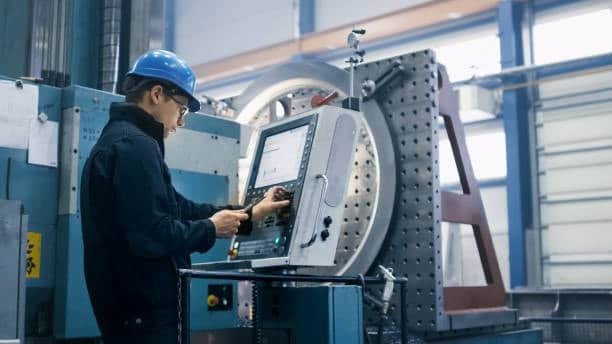
The Essence of CNC Milling
CNC milling represents a specific type of CNC machining process that uses a milling cutter as a rotary tool to remove material from a workpiece. Unlike turning operations where the workpiece rotates, milling involves a stationary workpiece and rotating cutting tools. This versatile machining method can create complex three-dimensional shapes with exceptional precision.
Types of CNC Mills
Vertical Milling Machines
In vertical mills, the spindle axis is vertically oriented. These machines excel at face milling operations and are widely used for creating slots, pockets, and profiles, unlike manual milling techniqu . The vertical configuration provides excellent visibility of the cutting process, making it preferred for many applications.
Horizontal Milling Machines
Horizontal mills position the spindle axis horizontally. This arrangement offers superior chip evacuation and allows for heavier cuts, making horizontal mills ideal for high-volume production and heavy material removal operations.
Universal Milling Machines
These versatile machines combine features of both vertical and horizontal mills. The spindle head can be adjusted to various angles, enabling complex machining operations without repositioning the workpiece.
Multi-Axis Milling Centers
Beyond the basic 3-axis configuration (X, Y, and Z), advanced milling centers offer 4-axis, 5-axis, or even more axes of motion. These additional rotational axes enable the machining of extremely complex geometries in a single setup.
CNC Milling Operations
Face Milling
Face milling creates flat surfaces by removing material perpendicular to the cutter’s axis. The cutter’s teeth engage both the side and face of the material, resulting in smooth, flat surfaces.
End Milling
End milling utilizes end mills in gang milling setup to create features such as slots, pockets, and contours. The cutting action occurs on both the end and the periphery of the tool, offering versatility for various geometric features.
Profile Milling
Profile milling involves cutting along the external or internal boundaries of a workpiece to create specific profiles or shapes. This operation is essential for creating complex contours and forms.
Pocket Milling
Pocket milling removes material to create recessed areas or cavities within a workpiece. The process requires careful consideration of tool paths to ensure complete material removal and proper corner radii.
Drilling and Hole-Making
While dedicated drilling machines exist, modern CNC milling centers often incorporate drilling capabilities. Tools can be automatically exchanged to perform drilling, reaming, boring, and tapping operations without moving the workpiece.
Material Considerations in CNC Machining

Machining Different Metals
Aluminum Machining
Aluminum alloys are popular in CNC machining due to their excellent machinability, light weight, and good strength-to-weight ratio with appropriate milling tools . When machining aluminum, high cutting speeds can be employed, though proper chip evacuation is crucial to prevent built-up edge formation.
Steel Machining
Steel machining requires robust tooling and appropriate cutting parameters. Carbon steels, alloy steels, and stainless steels each present unique challenges, from the gumminess of low-carbon steels to the work-hardening tendencies of austenitic stainless steels.
Titanium Machining
Titanium alloys, despite their exceptional strength-to-weight ratio, present significant machining challenges. Low thermal conductivity leads to heat concentration at the cutting edge, necessitating specialized tooling and cooling strategies.
Exotic Alloys
Superalloys like Inconel, Hastelloy, and Monel demand specialized machining approaches. These materials, often used in aerospace and chemical processing applications, typically require reduced cutting speeds and rigid machine setups.
Non-Metal Materials in CNC Machining
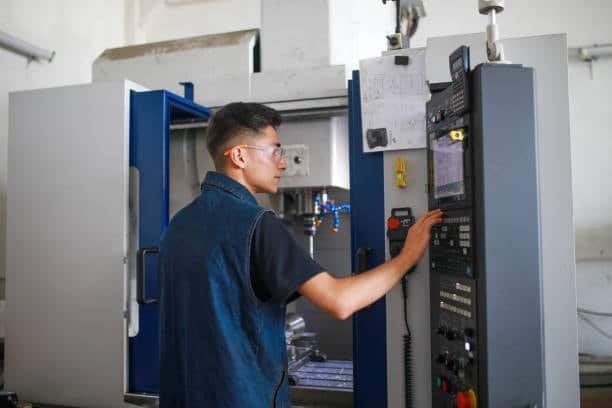
Engineering Plastics
From acetal and nylon to PEEK and PVC, engineering plastics offer unique combinations of properties suitable for various applications. CNC machining of these materials requires special attention to thermal effects and appropriate cutting parameters.
Composites
Fiber-reinforced composites like carbon fiber and fiberglass present unique machining challenges due to their anisotropic nature and abrasive reinforcement fibers. Special tooling and cutting strategies help minimize delamination and fiber pullout.
Woods and Wood Products
CNC routing of wood and engineered wood products enables the creation of intricate furniture, architectural elements, and artistic pieces. Proper tool selection and dust extraction are critical considerations when machining these materials.
CNC Programming and Control Systems
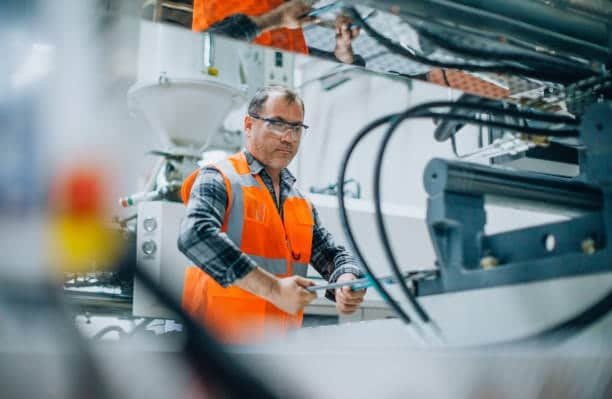
G-Code: The Language of CNC
G-code serves as the standard programming language for CNC machines. This alphanumeric code system uses commands like G01 (linear movement) and M03 (spindle on) to control machine movements and functions. While manual G-code programming remains valuable, modern CAM software has simplified the programming process significantly.
CAM Software in the CNC Workflow
Computer-Aided Manufacturing (CAM) software translates CAD models into machine-executable toolpaths. Modern CAM packages offer simulation capabilities, collision detection, and optimization features that streamline the programming process and reduce setup time.
Control Systems and Interfaces

Fanuc Controls
Fanuc control systems, known for their reliability and widespread industry adoption, offer consistent performance across various machine types. Their ubiquity has made Fanuc programming knowledge a valuable skill in manufacturing.
Siemens Controls
Siemens controls, particularly the Sinumerik series, provide advanced features and intuitive interfaces. These systems excel in complex contouring operations and multi-axis machining scenarios.
Heidenhain Controls
Heidenhain controllers are renowned for their high-precision capabilities, making them popular choices for toolmaking and mold manufacturing applications where exceptional accuracy is paramount.
Advanced CNC Machining Strategies

High-Speed Machining (HSM)
High-speed machining employs elevated cutting speeds and feeds while maintaining small, consistent cutting loads. This approach reduces cutting forces, minimizes heat generation, and can significantly decrease machining time while improving surface finish.
High-Efficiency Machining (HEM)
High-efficiency machining strategies focus on optimizing material removal rates through controlled engagement angles and strategic toolpaths. Techniques like trochoidal milling and adaptive clearing maximize tool life while maintaining productivity.
5-Axis Simultaneous Machining
By simultaneously controlling five axes of motion, modern CNC machines can create complex geometries that would be impossible with conventional 3-axis machining. This capability enables the production of turbine blades, impellers, and intricate medical implants.
Micro-Machining
Pushing the boundaries of precision, micro-machining creates features measured in microns rather than millimeters. This specialized discipline requires ultra-rigid machine tools, high-speed spindles, and microscopic cutting tools.
Tooling for CNC Machining
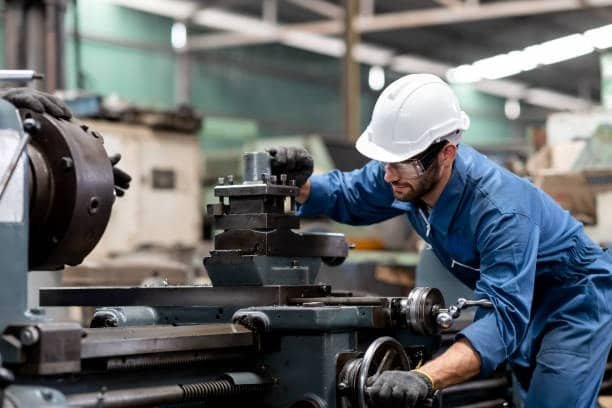
Cutting Tool Materials
High-Speed Steel (HSS)
Despite being one of the oldest cutting tool materials, HSS remains relevant for certain applications due to its toughness and relatively low cost. Modern coatings have extended the capabilities of HSS tools.
Carbide Tools
Tungsten carbide tools represent the workhorses of modern machining. Their exceptional hardness and wear resistance make them suitable for a wide range of materials and applications.
Ceramic Inserts
Ceramic cutting tools excel in high-temperature applications and can maintain their hardness at temperatures that would soften carbide. They’re particularly valuable when machining hardened steels and superalloys.
Polycrystalline Diamond (PCD)
PCD tools offer extraordinary wear resistance and edge retention, making them ideal for machining non-ferrous metals like aluminum and abrasive materials like carbon fiber composites.
Cubic Boron Nitride (CBN)
Second only to diamond in hardness, CBN tools specialize in machining hardened steels, cast irons, and superalloys at high cutting speeds.
Tool Coatings and Their Applications
Modern cutting tools often feature specialized coatings that enhance performance:
- Titanium Nitride (TiN): Provides increased hardness and reduced friction
- Titanium Carbonitride (TiCN): Offers enhanced toughness and wear resistance
- Titanium Aluminum Nitride (TiAlN): Excels in high-temperature applications
- Diamond-Like Carbon (DLC): Delivers extreme lubricity for non-ferrous materials
Tool Holders and Interfaces
The interface between the machine spindle and cutting tool significantly impacts machining performance:
- CAT/BT Tooling: Traditional steep taper systems still common in many machines
- HSK Tooling: Hollow shank tooling providing superior rigidity at high speeds
- Capto System: Polygonal coupling system offering excellent stability and quick-change capability
- Hydraulic and Thermal Tool Holders: Providing exceptional concentricity and grip strength
Quality Control in CNC Manufacturing
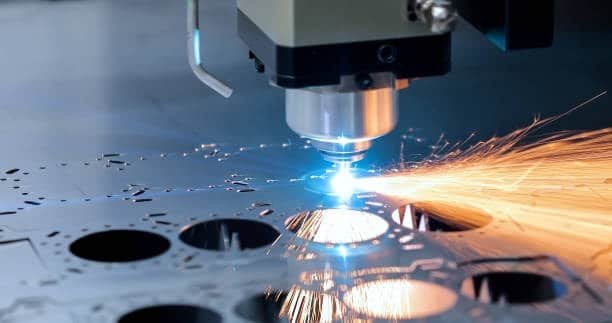
Inspection Techniques
Coordinate Measuring Machines (CMM)
CMMs provide precise dimensional verification by probing specific points on a workpiece and comparing the measured coordinates with the design specifications.
Optical Measurement Systems
Non-contact measurement using cameras and structured light allows rapid inspection of complex parts without physical contact.
In-Process Monitoring
Advanced CNC systems incorporate real-time monitoring of cutting forces, vibration, and other parameters to detect tool wear and process anomalies before they affect part quality.
Surface Finish Considerations
Surface finish quality, measured in Ra (roughness average) or other parameters, significantly impacts both the aesthetic and functional properties of machined components. Various machining parameters, tool selection, and finishing operations contribute to the final surface characteristics.
Tolerance Management
Successful CNC machining requires careful consideration of tolerances. GD&T (Geometric Dimensioning and Tolerancing) specifications define not just dimensional limits but also form and position requirements critical to component functionality.
Industry Applications of CNC Machining
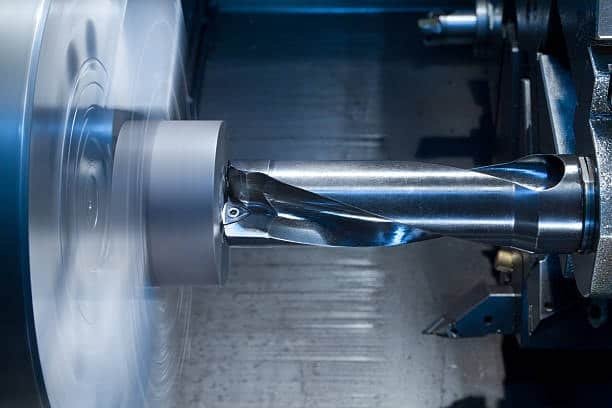
Aerospace Components
The aerospace industry relies heavily on CNC machining for producing structural components, engine parts, and precision hardware. The ability to create complex geometries from high-performance materials with exceptional accuracy makes CNC technology indispensable in aircraft manufacturing.
Automotive Parts Production
From prototype development to high-volume production, CNC machining plays a vital role in automotive manufacturing. Engine components, transmission parts, chassis elements, and tooling for other manufacturing processes all benefit from CNC precision.
Medical Device Manufacturing
The medical industry leverages CNC machining to create implants, surgical instruments, and diagnostic equipment components. The biocompatibility of materials like titanium, combined with the precision of CNC processes, enables the production of life-saving devices.
Electronics and Communications
CNC machining produces critical components for electronic devices, including heat sinks, chassis, connector housings, and RF components. The tight tolerances achievable with CNC processes ensure proper function in these sensitive applications.
Energy Sector Applications
From oil and gas drilling equipment to wind turbine components and nuclear power plant hardware, CNC machining creates parts capable of withstanding extreme conditions while maintaining critical safety and performance standards.
Economic Aspects of CNC Machining
Cost Factors in CNC Production
Multiple factors influence the cost of CNC-machined parts:
- Material costs (raw stock and associated waste)
- Programming and setup time
- Machining time (influenced by material, complexity, and tolerances)
- Tool wear and replacement
- Inspection and quality assurance
- Overhead costs including machine depreciation
Batch Size Considerations
CNC machining economics vary significantly with production volume. While setup costs remain relatively fixed regardless of quantity, the per-part machining cost must be amortized across the production run. This dynamic creates different optimum approaches for prototypes versus high-volume production.
Outsourcing vs. In-House Production
The decision to maintain in-house CNC capabilities versus outsourcing to specialized service providers involves complex considerations:
- Capital investment requirements
- Facility and infrastructure needs
- Technical expertise availability
- Production volume and consistency
- Intellectual property protection
- Lead time requirements
Environmental Considerations in CNC Manufacturing
Sustainable Machining Practices
The manufacturing industry increasingly focuses on sustainability through solutions like automatic tool changers that enhance efficiency.
- Minimizing material waste through optimized toolpaths and nesting
- Reducing energy consumption with efficient machining strategies
- Implementing metalworking fluid recycling and filtration cnc milling machines
- Utilizing biodegradable cutting fluids when possible cnc milling process
Waste Management and Recycling
Metal chips and swarf represent a significant byproduct of machining operations. Modern facilities implement chip processing equipment and recycling programs to recapture material value and reduce environmental impact.
Energy Efficiency in CNC Operations
Energy-efficient practices include:
- Optimizing machine utilization and batch scheduling
- Implementing energy recovery systems types of cnc milling
- Utilizing variable-frequency drives and intelligent power management
- Designing energy-efficient facility systems for compressed air, ventilation, and climate control
Green Manufacturing Initiatives
Forward-thinking machining operations increasingly adopt comprehensive green manufacturing initiatives that extend beyond basic recycling. These programs encompass the entire product lifecycle, from raw material sourcing to end-of-life considerations angular milling. By implementing ISO 14001 environmental management systems and pursuing carbon-neutral operations, CNC machining facilities can significantly reduce their environmental footprint while often realizing economic benefits through improved efficiency and reduced waste disposal costs axis milling machines.
Future Trends in CNC Machining
Industry 4.0 Integration
The convergence of physical manufacturing systems with digital technologies characterizes Industry 4.0. CNC machines increasingly incorporate IoT connectivity, allowing real-time monitoring, predictive maintenance, and integration with overall production management systems horizontal machining center.
Artificial Intelligence in Machining
Machine learning algorithms analyze vast datasets from machining operations to optimize cutting parameters, predict tool wear, and detect anomalies. This AI-driven approach promises to enhance both productivity and quality.
Hybrid Manufacturing Technologies
Combining additive and subtractive manufacturing in single machines offers unique capabilities. These hybrid systems can build up material through 3D printing and then achieve precision dimensions and surface finishes through CNC machining, all in one setup plain milling. This convergence of technologies enables the creation of components with complex internal geometries that would be impossible through traditional machining alone.
Advancements in Automation
Robotic loading/unloading, automated tool management, and unmanned machining cells extend the capabilities of CNC operations. Lights-out manufacturing—fully automated production without human presence—is becoming increasingly practical for certain applications. The integration of collaborative robots (cobots) further enhances this trend, allowing flexible automation approaches where humans and machines work together safely in shared spaces.
Digital Twins in Machining
Digital twin technology creates virtual replicas of physical CNC machines and processes, enabling simulation, monitoring, and optimization in a digital environment before actual production. This powerful approach allows manufacturers to identify potential issues, optimize parameters, and reduce setup time while maintaining digital records of how parts were actually produced for quality assurance purposes.
Choosing the Right CNC Machine
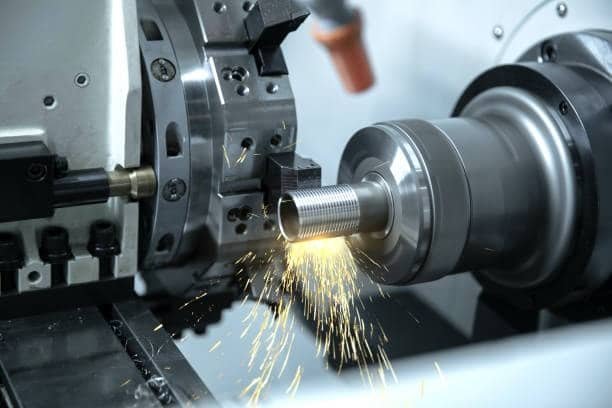
Machine Specifications and Capabilities
Key specifications to consider when selecting a CNC machine include:
- Axis configuration and travel ranges
- Spindle power and speed range
- Tool magazine capacity and tool change time
- Achievable accuracy and repeatability
- Table size and maximum workpiece weight
- Control system features and programmability
- Machine rigidity and vibration damping characteristics
Understanding Machine Accuracy
Machine accuracy encompasses several distinct but related concepts:
- Positioning Accuracy: How precisely the machine can move to a commanded position
- Repeatability: The machine’s ability to return to the same position consistently
- Volumetric Accuracy: The three-dimensional precision across the entire work envelope
- Geometric Accuracy: How well the machine maintains perpendicularity and alignment between axes
Understanding these metrics helps in selecting equipment appropriate for specific tolerance requirements.
Matching Machine to Application
Different manufacturing scenarios demand different machine characteristics:
- High-volume production may prioritize speed and automation
- Toolmaking applications require exceptional accuracy
- Heavy machining operations demand rigidity and power
- Complex parts may necessitate 5-axis capabilities
Total Cost of Ownership Analysis
Beyond the initial purchase price, comprehensive machine evaluation should consider:
- Maintenance requirements and service support
- Energy consumption and operating costs
- Tooling system compatibility and costs
- Required operator skill level
- Expected useful life and resale value
Troubleshooting Common CNC Machining Issues

Surface Finish Problems
Surface finish defects can result from various factors including inappropriate cutting speeds and feeds, tool wear, inadequate coolant, or machine vibration. Systematic analysis of these parameters helps identify and resolve issues affecting part quality. Regular machine maintenance and calibration also play crucial roles in maintaining consistent surface quality.
Tool Breakage Prevention
Tool breakage represents both a safety concern and a production disruption. Preventative strategies include proper tool selection for specific materials, optimized cutting parameters, effective chip evacuation, and tool condition monitoring systems. Many modern CNC systems incorporate adaptive feed control that automatically adjusts cutting parameters based on sensed cutting loads.
Conclusion
CNC machining and milling stand at the intersection of digital design and physical manufacturing, embodying the precision and capability that modern industry demands. From the intricate components in smartphones to the critical parts in aircraft engines, these technologies enable the products that define our technological world.
For manufacturers, understanding the nuances of CNC processes—from tool selection and cutting parameters to quality control and cost optimization—provides a competitive advantage in an increasingly demanding marketplace. For engineers and designers, familiarity with machining capabilities and constraints informs better product development, ensuring that designs are not just theoretically sound but practically manufacturable.
As manufacturing continues its digital transformation, CNC technology remains a cornerstone of production capability. The ongoing convergence of mechanical precision with digital intelligence promises to further enhance the efficiency, capability, and accessibility of these essential manufacturing processes.

